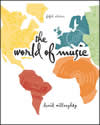Chapter 8 World Music: The Western Hemisphere The roots of folk, classical, and popular music traditions of North and
South America, Mexico, and the Caribbean—including American ethnic music The music discussed in this chapter is derived from the following repertoires: - Music of the Native Americans
- Ethnic Music of the United States
- Music of South America, Mexico, and the Caribbean
Native American music is presented as the indigenous music of the United States that has to some extent retained its ethnic purity, even though many Native Americans have embraced mainstream American popular music. Most Americans have not valued this music nor has it been assimilated with much success into the Western European musical mainstream. The musical styles and traditional performance practices, as well as the current state of this seemingly enigmatic repertoire, are discussed. The chapter acknowledges the importance of various ethnic repertoires in the United States, including cajun, zydeco, klezmer, and Hispanic repertories. The music of Canada is not presented at length because of its essential similarity to the roots and traditions of music of the United States. The indigenous music of Mexico and Latin America is presented not as that of the native Indians but as that of the mestizos—the predominant group having Indian and Spanish or Portuguese ancestry. The role of the dominant, Spanish Catholic church in the shaping (and suppressing) of native culture during the sixteenth century is profound. Chapter 8 describes the characteristics of traditional Latin American music and recognizes its importance for the extensive impact it has had on both vernacular and classical musical styles in the United States. It discusses traditional instruments, folk songs and dances, the influences of music education, and concert art music from Mexico and South America. Goals for Listening - Continued refinement of previously presented listening skills
- Recognize dramatic stylistic differences
- Identify scales other than major and minor
- Recognize new uses of rhythm
- Identify and describe new instruments and new sounds
- Describe functional music
- Describe cross-cultural music
| 


 2003 McGraw-Hill Higher Education
2003 McGraw-Hill Higher Education